PRESTO PLANS
Sent straight to your inbox
CLICK HERE TO ACCESS
Sign up to receive 10 ready-to-use ELA resources your students will love!
10 FREE ELA RESOURCES
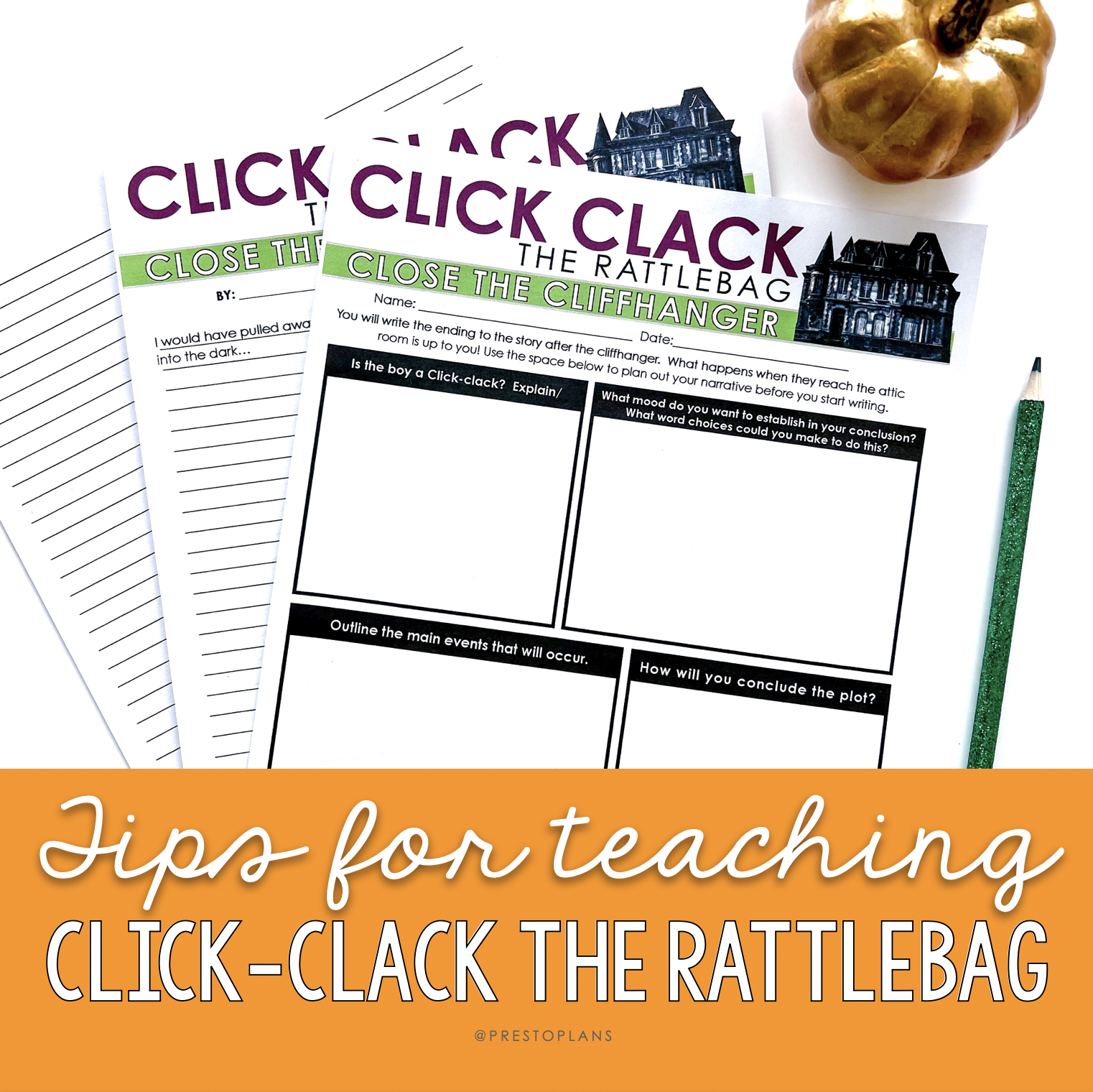
Teaching Click-Clack the Rattlebag by Neil Gaiman
October is the season of tricks and treats, and if you’re looking to infuse a few scares into your middle or high school ELA classroom, teaching Neil Gaiman’s short story “Click-Clack the Rattlebag” is an excellent choice.
This spooky tale, published in 2015, has all the makings of a perfect ghost story. It centers around a young man who agrees to tell his girlfriend’s little brother a bedtime story that is “a little bit” scary. As suspense slowly builds, the reader eventually learns that it is not the young child who will be afraid by the end!
Where to begin when teaching “Click-Clack the Rattlebag” in secondary ELA? Here’s my step-by-step approach for making the most of Neil Gaiman’s gothic masterpiece.
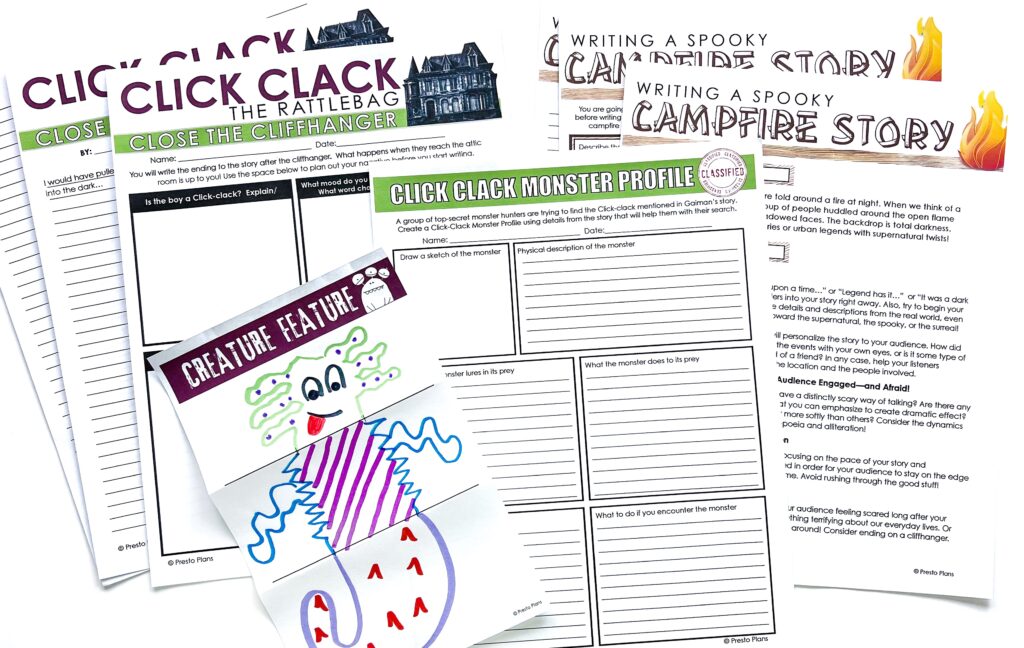
Build Background Information
To start teaching any short story, including “Click-Clack the Rattlebag,” I like to share some information about the author and the text itself.
First, I like to explain a little bit about the gothic horror genre, which is commonly characterized by the presence of a ghost or monster, an atmosphere of mystery, a helpless victim, and a setting in a haunted house.
Then, I spend some time discussing Neil Gaiman, who is a favorite of mine! Born in the UK, Gaiman now lives in the United States. He previously worked as a journalist before creating the groundbreaking comic book The Sandman. Some of his other notable texts include Coraline, Stardust and American Gods, as well as the fantasy novel Good Omens (co-written with Terry Pratchett), which is now a comedy series on Amazon Prime.
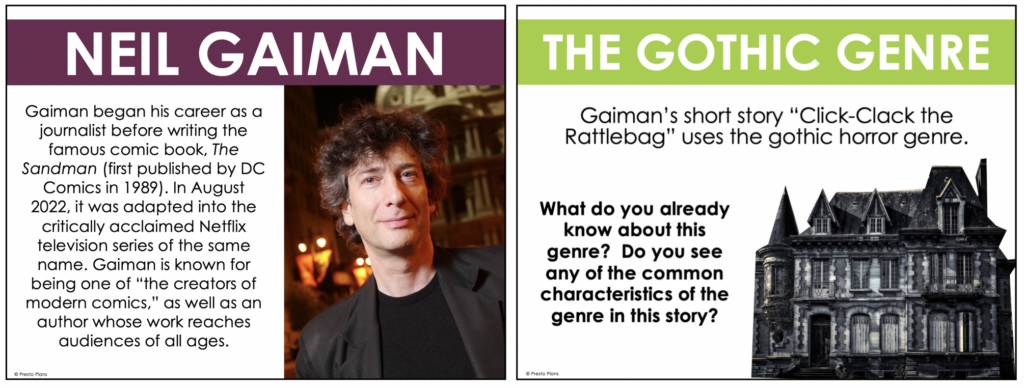
Pre-Reading Activity
I find it really effective to “hook” teenage readers with a pre-reading activity at the beginning of a short story. Because “Click-Clack The Rattlebag” doesn’t give a physical description of the fearsome “click-clacks,” I like to have students design and create mysterious creatures of their own!
Working in groups of three, students take turns to design a section of a “monster” on a paper folded in thirds. The first student draws the monster’s head and upper body, while the second student draws the monster’s torso. Finally, the last student draws the monster’s legs, before they open the page up and reveal the mysterious creature!
This activity always gets a lot of laughs in middle or high school ELA class. If you have a few minutes to extend your “Click-Clack the Rattlebag” lesson plan, you can have groups of students give their monster a name and a description! It can be quite fun to share these with the class, or even put the creatures up on a bulletin board.
TIP: I like to use a template with two small vertical lines that act as a guide for where to start and finish each section of the drawing. This ensures that each part connects together seamlessly.
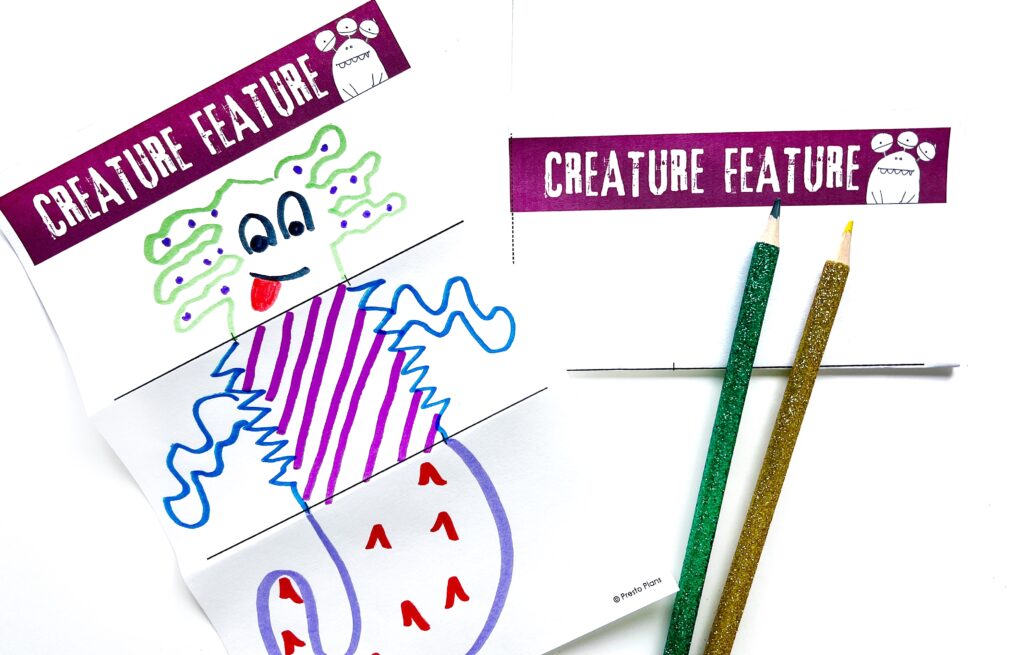
Pre-Reading Questions
Next, I like to set the stage for reading the short story by getting students to think about a few pre-reading questions.
I really love making questions as interactive as possible, so I often set the room up with four stations, one for each question. Working in small groups, students circulate to the four questions, stopping to discuss their thoughts and jot down their responses.
When teaching “Click-Clack the Rattlebag,” I find the following questions usually get the conversation flowing:
- What are some scary “urban legends” you have heard about?
- What are some common fears that people have? What are you afraid of?
- Has someone ever told you a scary story before? Did you believe it? Explain.
- Do you consider yourself someone who likes being scared? Are you scared easily?
Once this discussion is over, it’s time for students to silently read the story!
Post-Reading Discussion
After students have had time to carefully read the story on their own, I like to make time for a second discussion. This post-reading discussion allows students to pause and reflect on the events of the story (including its unsettling ending!), as well as how it fits more widely into the gothic genre.
If time permits, I also like students to reflect on the title of the story, and to speculate whether their own actions would be different than those of the protagonist!

Watch a Live Reading
Because Neil Gaiman is such a compelling storyteller, I like to share a video of a live reading of “Click-Clack the Rattlebag” in an intimate, candle-lit setting. I find this can spark some very interesting discussion about the different ways people can experience stories.
In this section of my “Click-Clack the Rattlebag” lesson, I invite students to write a brief reflective journal entry. Here, I prompt them to compare and contrast their initial reading of the story with the video version. If they need more guidance, I ask them to highlight the differences between reading the story and hearing it read aloud, as well as how atmosphere contributes to the overall theme. This brief writing activity can also be used as an exit slip, as it is a quick way to check students’ understanding.
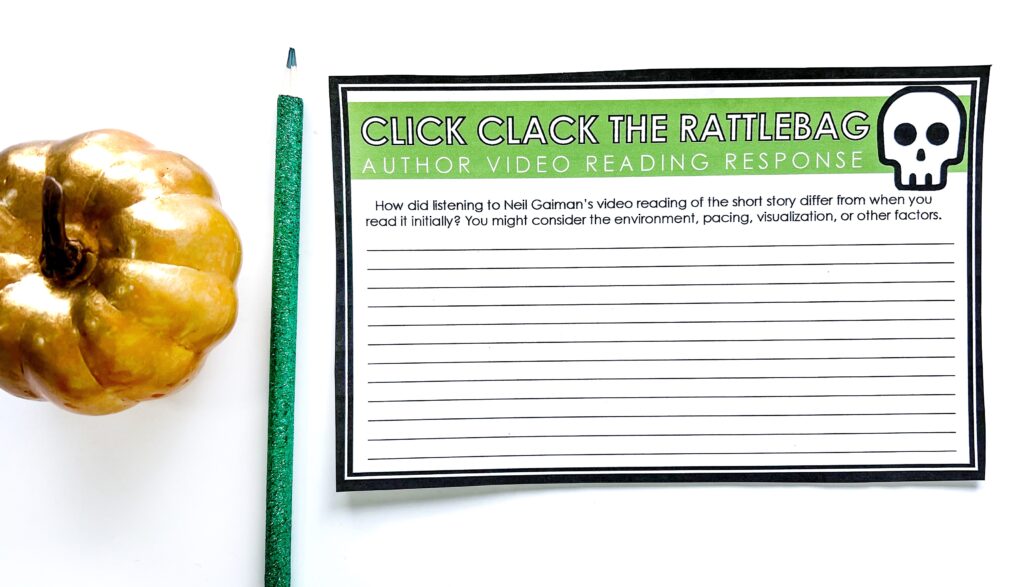
Vocabulary
When teaching “Click-Clack the Rattlebag,” I find there are several complex vocabulary terms that require more explicit teaching.
Because vocabulary activities have a tendency to be a little bit dry (for students, and for me!), I like to try to add a dash of creativity! In the Vocabulary Mystery Words activity, students cut out a set of vocabulary words, as well as a set of cards featuring definitions. Working alone or in pairs, they match the definition to the words, and use the numbers on the definition cards to put them in order. When all the clues are matched correctly, an ominous warning message is revealed!
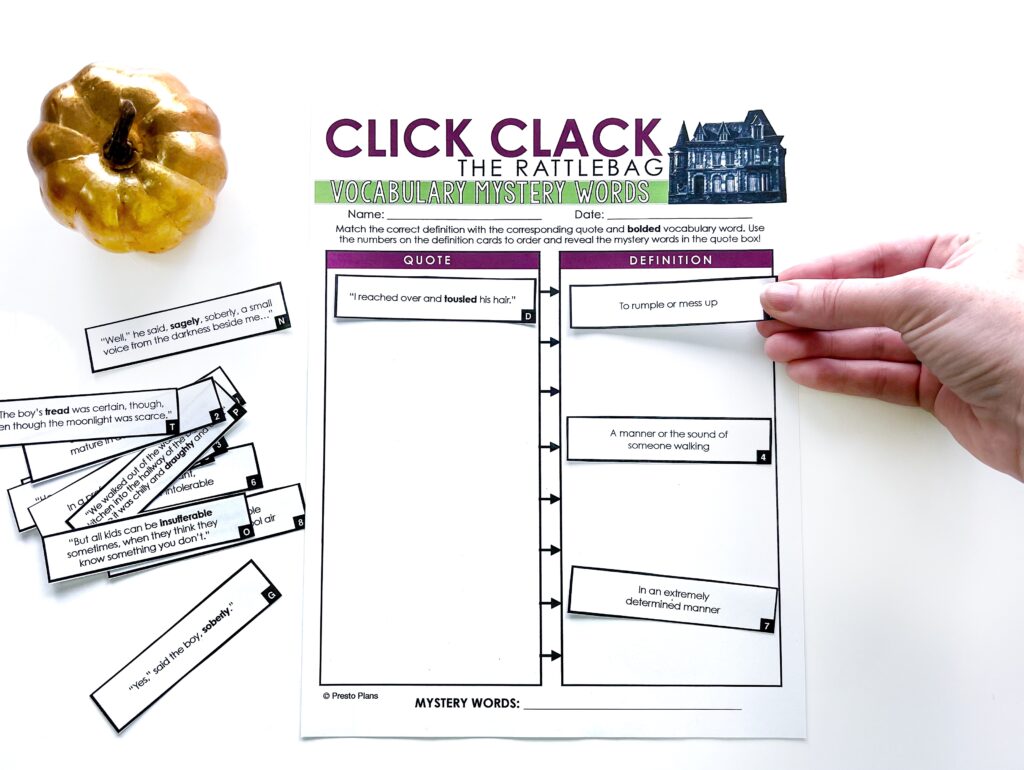
Reading Questions
Once students have explored the vocabulary of “Click-Clack the Rattlebag,” it’s time for them to reflect on the story by answering a series of analysis questions. As they dive deeper into the text, I encourage them to respond in short paragraphs, citing specific evidence from the story wherever possible.
I like to have students work individually to respond to reading questions. This allows me to check their understanding of the text, as well as their ability to expand on their ideas with evidence and examples.
Some questions I like to ask include:
- What can you infer about the ending of the story?
- How is dialogue used to build suspense?
- How would the story be different if it was told from another perspective?
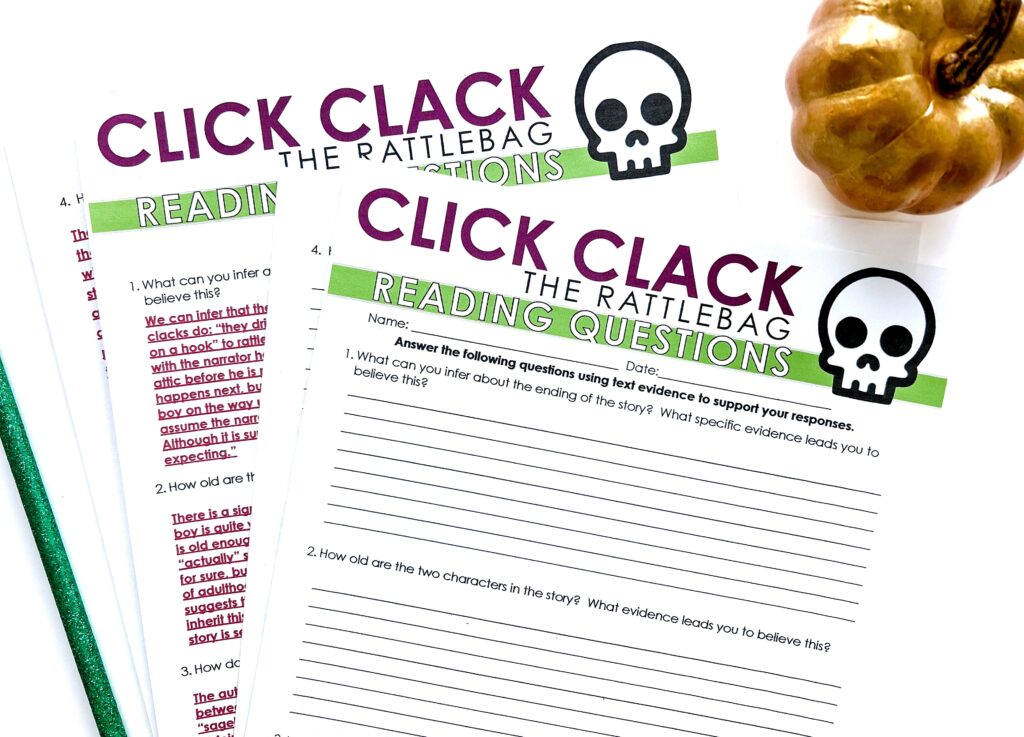
Spooky Onomatopoeia
Like many good ghost stories, “Click-Clack the Rattlebag” contains plenty of high-quality examples of onomatopoeia! As students explore the impact of sounds on the overall literary effect of a story, why not give them the opportunity to try some of their own examples?
In the Spooky Onomatopoeia task, I like to provide students with some examples of scary-sounding words, like groan, swoosh and grumble. Then, I invite them to write their own spooky sentences, inspired by Neil Gaiman’s creepy text!
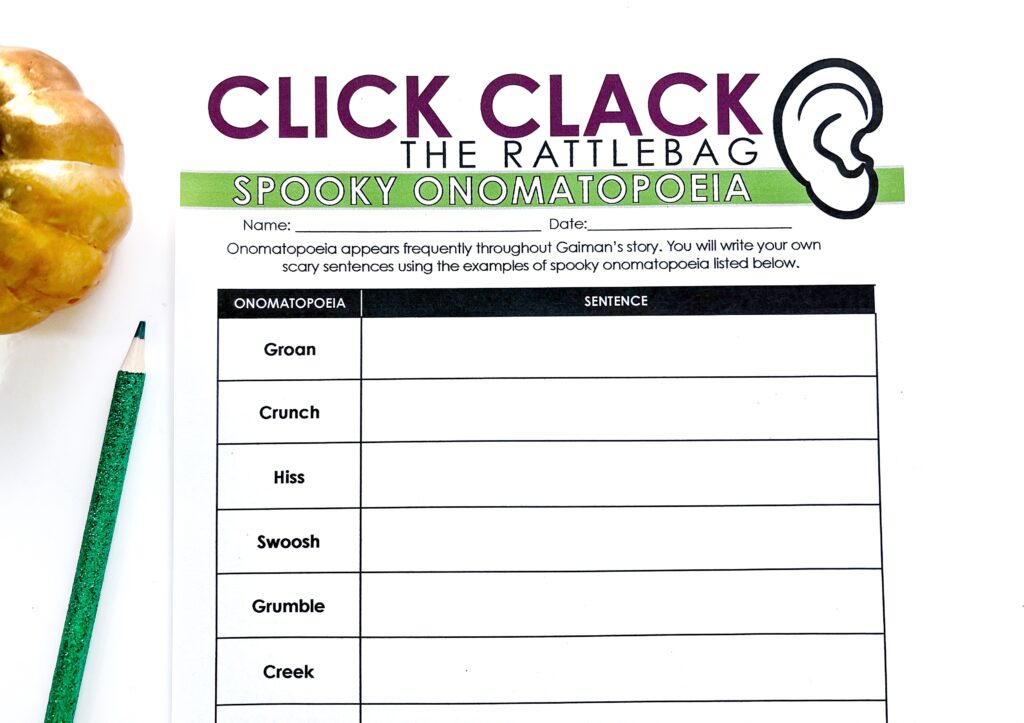
Guided Analysis
If you’d like your students to explore literary elements like foreshadowing and irony in more depth, a guided analysis task can really help.
I find teaching “Click-Clack the Rattlebag” provides a natural opportunity to explore more sophisticated literary techniques. In this task, I like to split students up in small groups. From here, I share a prompt that defines and briefly explains a literary term (irony, theme, symbolism). Then, students work in their groups to re-read the story and find evidence of each literary technique, recording the evidence in a graphic organizer.
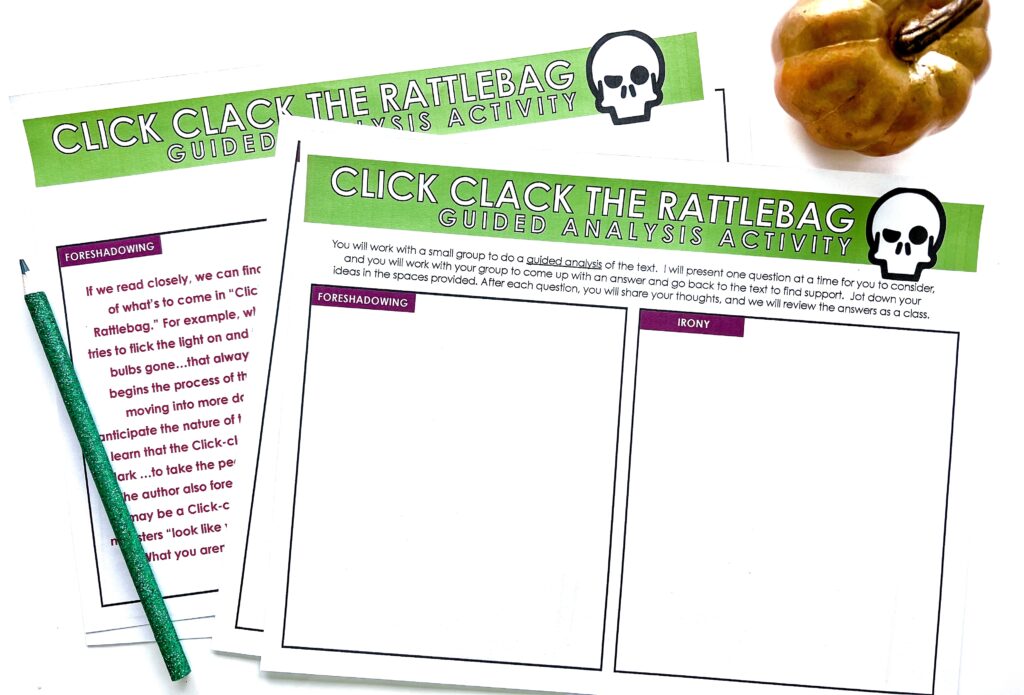
Monster Profile Activity
Middle and high school students love an opportunity to flex their creative muscles. This is why I love including a few creative writing tasks at the end of each short story study.
In the Monster Profile Activity, a group of top-secret monster hunters are trying to find the Click-clack mentioned in Gaiman’s story. They’ve put your students in charge of preparing a detailed Click-Clack Monster Profile using details from the story that will help them with their search.
Using a provided template, students must sketch their interpretation of a Click-clack. They must also include a physical description, information about how the monster captures its prey, and details about a person should do if they encounter one of these terrifying creatures!
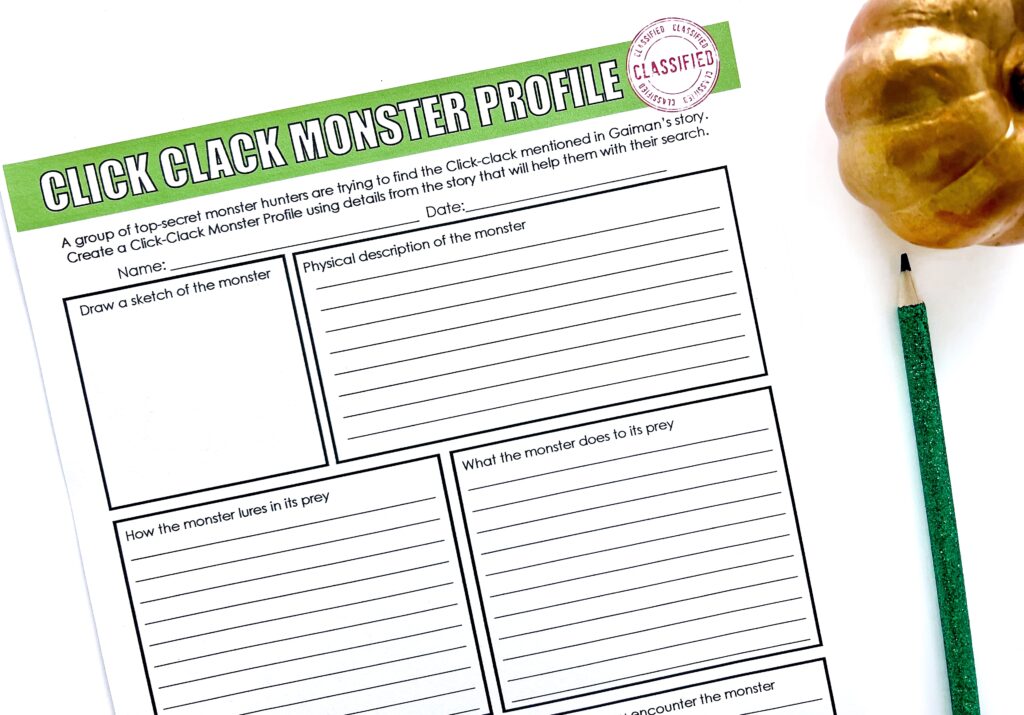
Close the Cliffhanger
When teaching “Click-Clack The Rattlebag,” I find some students are frustrated by the cliffhanger ending. They want to know what happens next! If you have 15 or 20 minutes, this is an excellent time to provide students with a free writing activity.
In the “Close the Cliffhanger” task, students write an ending to the story that goes beyond where Neil Gaiman left off. I’m always surprised by the variety of explanations about what happens next on the other side of the opened door!
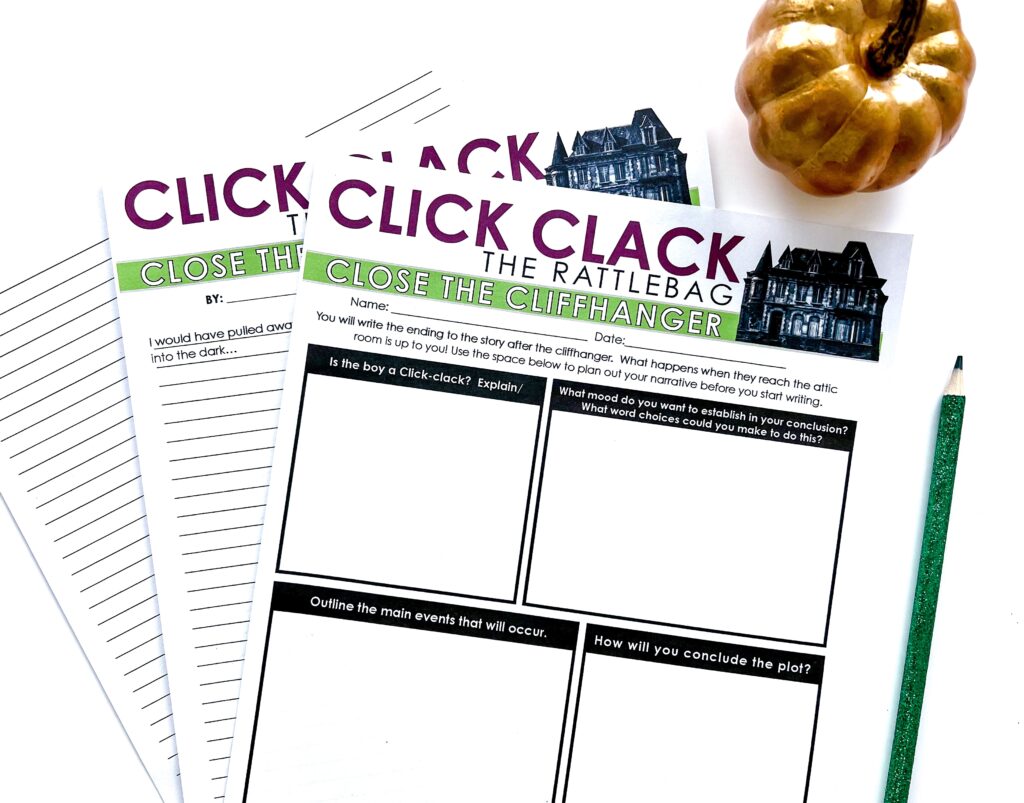
Campfire Stories
Because “Click-Clack the Rattlebag” has all the makings of a compelling campfire story, it can also be a great segue into a narrative writing task. I really love scheduling this activity so the story-sharing day happens on or around Halloween itself!
I begin the lesson by sharing some common elements of campfire stories. These include a classic opening line (“It was a dark and stormy night…”), as well as building suspense and dramatic tension. Once students have written their stories, I encourage them to practice their storytelling techniques, experimenting with volume and pacing.
Finally, I set the scene by transforming the classroom into a “campsite” – arranging chairs in a circle and projecting a video of a fireplace or campfire. Switch the lights off, and have students take turns reading their spooky stories out loud to a captive audience!
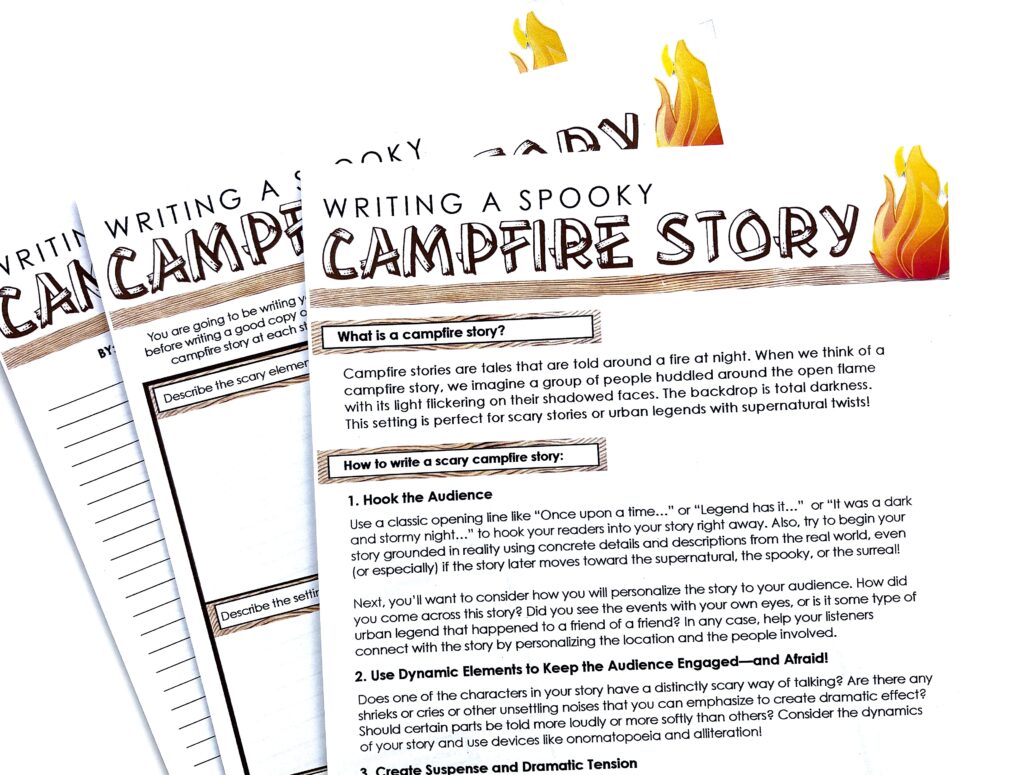
I hope this post has given you lots of ideas for teaching “Click-Clack the Rattlebag” in your middle or high school classroom!
You can grab a ready-to-use short story bundle for “Click-Clack the Rattlebag” below!

If you love spooky stories at this (or any!) time of year, you might also like to have a look at my Scary Short Stories Bundle! It contains a variety of creative, no-prep lessons to teach seven different short stories that are perfect for Halloween!
Search the blog for what you are teaching
GIVEAWAYS
sent straight to your inbox!
share this post